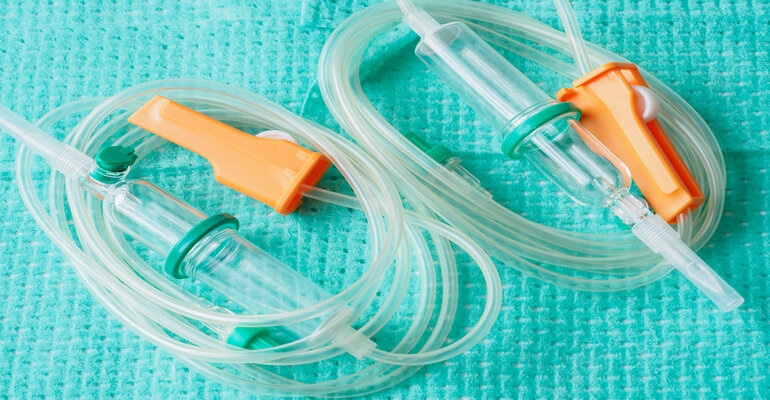Growth Expected in Medical Tubing Market Amidst Healthcare Challenges
The demand for medical tubing products is evolving as more patients live with conditions that require surgery.
April 18, 2023

The prevalence of chronic disease continues to serve as a market driver for various types of medical specialty products. At the same time, continued advancements to the technologies behind these same products is also proving to be a catalyst for demand through the improvements to care delivery that they help to produce. Uniquely positioned within this market dynamic is the medical tubing industry. A necessity for many medical products, tubing is available in various forms, including plastics, silicone, rubber, and metal. It is thus found in various devices, including catheters, drug delivery systems, intravenous sets, peristaltic pumps, and biopharmaceutical laboratory equipment. This versatility is a leading contributor to recent projections that claim the medical tubing market will grow to $ 15.59 billion by 2028, up from $8.19 billion in 2021, says Tommy Sargent, director of medical sales at Proterial High-Performance Medical Solutions.
“We convert a lot of materials (resins) into challenging configurations, novel tubing designs that are going into various cases for vascular, neurovascular, cardiovascular, and endoscopy,” Sargent said.
A company founded 20 years ago and formerly known as HTP Medical, Proterial is among nearly 20 organizations that have been recognized as top players in the industry by Vantage Market Research, a group that conducts consumer-based surveys to better understand customer sentiment, perceptions, and overall brand health. A recent report by Vantage has also determined the current market is being bolstered by an increasing number of surgical procedures and technological advancements in tubing materials and manufacturing processes. These benefits include improved biocompatibility, increased flexibility, and better resistance to kinking, twisting, and collapsing. Enhanced safety and efficacy of medical devices are also playing a key role in industry growth, as is a growing demand for minimally invasive procedures, the report finds.
Comprehensive need
According to the World Health Organization (WHO), the population of adults aged 60 years and older is expected to reach 2 billion globally by 2050, a number that stood at 900 million in 2015. This demographic shift is an indication that more people are now able to live with common chronic conditions such as diabetes, cancer, and cardiovascular disease. These conditions are not specific to older populations, however. As Sargent explains, much of the need for niche tubing materials is seen among the youngest of patients.
“We’re providing a lot of materials for neonatal feeding tubes where we’re marrying our medical tubing with the cable side of the business to offer sensoring and fiber optics for some of the most critical neonates,” he said. Other industry trends include the need for tubing and cable to support endoscopy, single use scopes are trending higher; and need for more micro-based fluid management systems, which are typically utilized during most surgical cases, and dialysis care for renal patients. “We do a lot of novel extrusions in highly engineered materials for renal care,” Sargent said. “We’re partnered with some of the top medtech original equipment manufacturers to deliver high-quality extrusions and tubing for renal and dialysis care.”
A digital and robotic future
As Sargent sees it, with continued technological advances, the industry is seeing more ingenuity and inventiveness particularly for digital and robotic surgery procedures. “We can make miniature tubing that includes channels for different tools, such as cameras that can go through tortuous paths of our anatomy through small incisions to detect different diagnoses in a shorter timeframe,” he said. “Currently, only 2% of surgeries are utilizing robotics. If that goes up to even 10%, that will be billions of dollars for this industry.”
According to the Vantage report, increased adoption of 3D printing also presents an opportunity for medical tubing manufacturers to develop customized products. Integration with smart technologies, such as the Internet of Things and artificial intelligence, is also spurring the development of products that can be integrated with tubing technologies to enhance their functionality and to provide better patient outcomes.
“No matter how far upstream you are in this industry, you’re a critical component with impacting patient outcomes,” Sargent said. “It’s awesome to be part of that value stream and to be recognized for it as a thought leader in the healthcare space.”
Regional roundup
North America and Europe continue to lead the global tubing market due to the presence of well-established healthcare infrastructures and high healthcare spending, along with the prevalence of chronic diseases, according to the Vantage report. Regions that are expected to see significant growth in this space include the Asian Pacific, Latin America, Middle East, and Africa due to better healthcare awareness, an increasing adoption of medical devices, and rising healthcare expenditures.
Challenges exist
Despite the positive outlook, the tubing industry faces some difficulty related to strict regulations that require manufacturers to comply with several types of standards to ensure product safety and efficacy, according to the Vantage report. Competition from alternative materials and fluctuations in raw material prices are also seen as signs of restraint toward market growth. A lack of reimbursement policies can also limit the adoption of tubing devices currently.
Custom ordering and the establishment of manufacturing sites in growing regions of demand are ways that some companies are navigating various challenges. “Custom products are a growing, evolving space for us,” he said. “We can add a widget, or a clamp, or a connector on the end [of tubing] that goes back to an interface or device console. This brings value under one roof. There’s also been a lot of market disruptions with COVID and the supply chain,” he said. “Companies like us are setting up manufacturing sites in other areas of the world for region-to-region buying.”
About the Author(s)
You May Also Like

.png?width=300&auto=webp&quality=80&disable=upscale)
